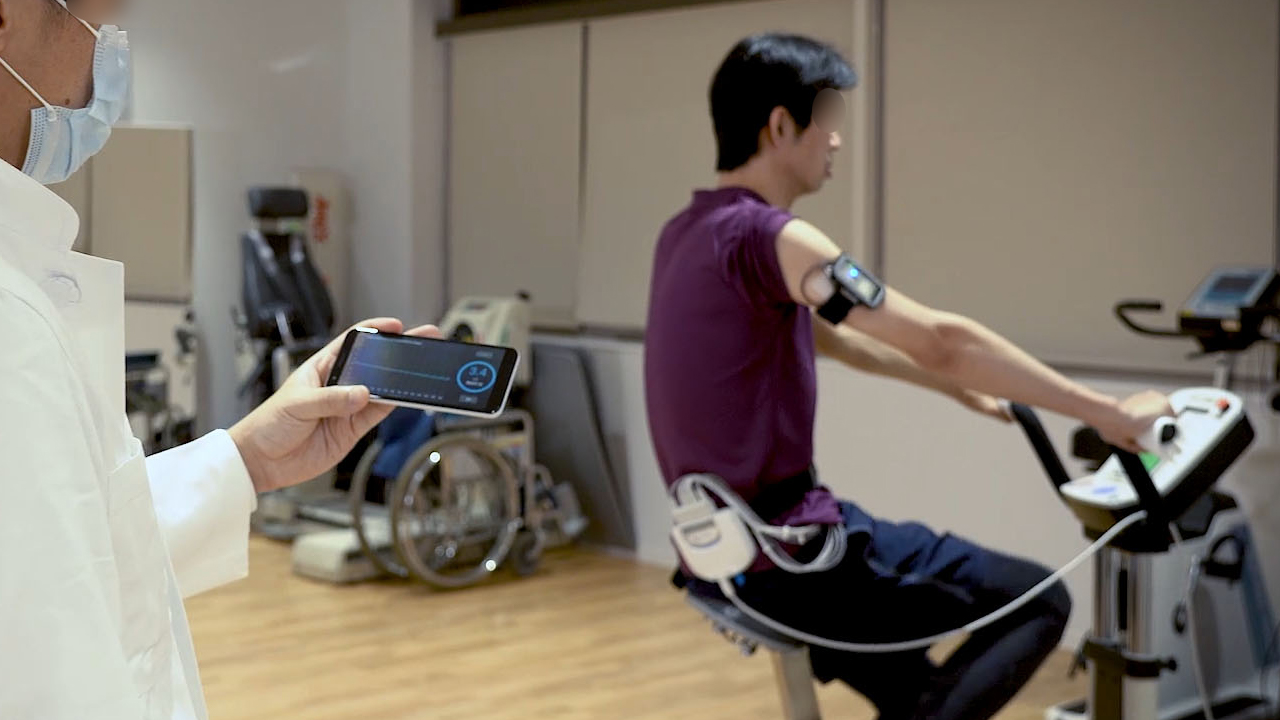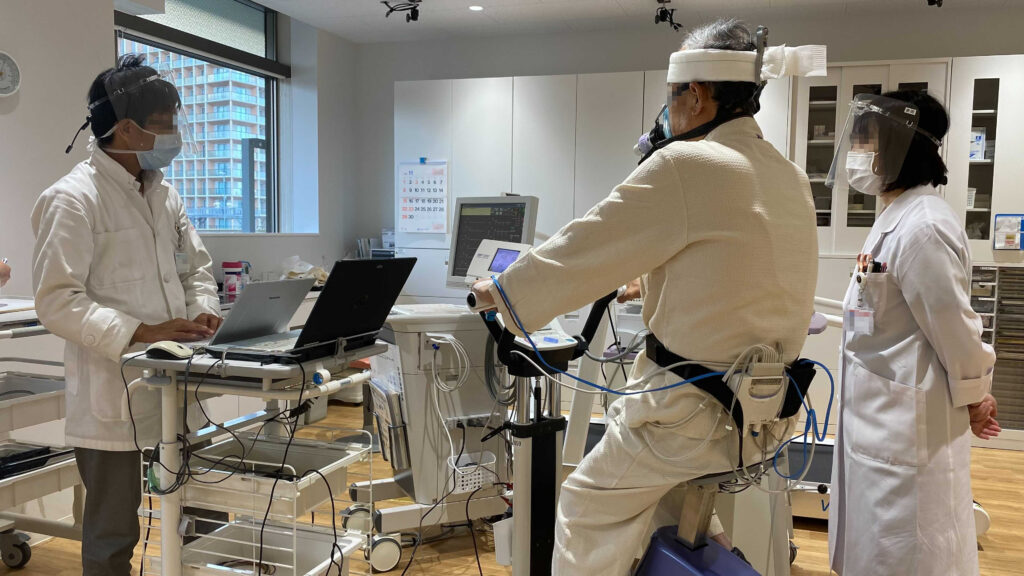Lab

We change cardiac rehabilitation
A day in 2019. We were developing a sweat lactate sensor with the goal of expanding into the sports domain, but it'was not easy to gaining traction (proof of success) to get it off the ground as a business. As we held more and more meetings, it became clear that even though it was an excellent tool, a number of hurdles had to be overcome in order to solve the problems faced in the sports domain.
In the midst of this agonizing situation, President Nakashima approached Dr. Katsumata of the Institute for Integrated Sports Medicine at Keio University School of Medicine (*At that time, he belonged to the Department of Cardiovascular Medicine). He then introduced the sweat lactate sensor as an interesting tool. Dr. Katsumata, who as a physician was rehabilitating heart failure patients on a daily basis, saw the potential to change the way medicine was practiced and decided to pursue his research.
Cardiac rehabilitation is an exercise therapy program prescribed by physicians to help patients with cardiac disease return to society. A typical example is the cardiopulmonary exercise test (CPX). The patient exercises using an ergometer and other equipment, and as the load is gradually increased, the point at which the patient switches from aerobic to anaerobic exercise (AT: Anaerobic Threshold) can be detected based on changes in the concentration of carbon dioxide in the breath and other factors. By diagnosing the appropriate level of exercise that does not put a burden on the heart, it is possible to avoid the risk of heart failure in daily life.
Despite the growing importance of cardiac rehabilitation along with the increasing number of patients each year, the implementation rate of cardiac rehabilitation in the entire healthcare facilities is very low. The need for expensive and large equipment, the heavy burden on the patient such as wearing a mask, and the time required to learn the complicated and difficult operation are the main obstacles to its widespread use.

Previous studies have shown that there is a correlation between AT, as measured by the CPX test, and LT (Lactate Threshold), the point at which blood lactate levels rise. If lactate in sweat could be shown to correlate with these values, it could replace the conventional methods, thereby solving the problem and promoting the widespread use of cardiac rehabilitation at once.
In September of the same year, the AMED (Japan Agency for Medical Research and Development) accepted our proposal, and we began our journey toward the development of a sweat lactate sensor as a medical device. In this research, sweat lactate was measured in more than 100 patients over a three-year period until 2022, and a paper was released showing the usefulness of the test, which had a great impact on the world.
Going Beyond the Papers
In October of the same year, we were selected as one of the target companies for the "Advanced Medical Devices Acceleration Project" (AMDAP), a project subsidized by the Tokyo Metropolitan Government. The fog that had enveloped us six months earlier lifted, and the direction of the business became clear. Our project received support from a number of advisors, and in 2021, our company received a grant.
In 2021, as a participating company in the large-scale project "Co-Creation Opportunity Formation Support Program" (COI-NEXT) by JST (Japan Science and Technology Agency), we will build an integrated database of biological information including sweat lactate data. In the far future, it will be commonplace to use AI and big data to navigate people's health… Numerous studies are being born in the dream of such a society.
Our pathway toward medical devices is about to reach a turning point with the start of investigator-initiated clinical trials at Keio University in 2022. Medical care without burden for both physicians and patients. Our challenge to be the first in the world will continue through both research and business.
【Related Links】
